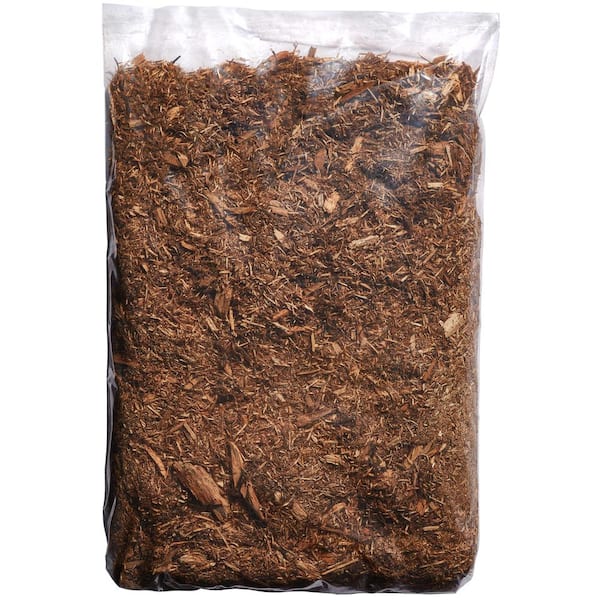Wondering how much cedar mulch you need? It’s a common question for gardeners.
To find out, you need to consider a few factors like garden size and mulch depth. Cedar mulch helps your garden in many ways. It keeps soil moist, reduces weeds, and adds a pleasant aroma. But figuring out the right amount can be tricky.
Too little won’t be effective. Too much can harm your plants. This guide will help you calculate the perfect amount. Understanding how to measure and spread cedar mulch will ensure your garden thrives. Let’s dive in and make your garden planning easier.
Introduction To Cedar Mulch
Cedar mulch is a popular choice for gardens. It helps keep moisture in the soil. This reduces the need for watering. Cedar mulch also helps control weeds. It can make your garden look tidy and clean.
Cedar mulch has many benefits. It can repel insects. This is because of the natural oils in the wood. These oils also make the mulch last longer than other types. Cedar mulch does not break down quickly. This means less maintenance for you.
Cedar mulch comes in different types. There is shredded cedar mulch. This type is good for flower beds. It stays in place well. Cedar bark mulch is another type. It looks nice and lasts long. There is also cedar wood chips. These are larger pieces. They are good for pathways.
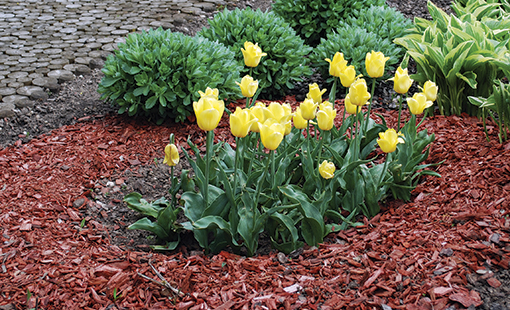
Credit: adamsfarms.com
Calculating Mulch Requirements
Start by measuring your garden area. Use a tape measure to get the length and width. Write down these measurements. Multiply the length by the width. This gives you the total square feet of your garden. For example, if your garden is 10 feet long and 5 feet wide, multiply 10 by 5. You will have 50 square feet.
Decide how deep you want your mulch. Most people choose 2 to 3 inches deep. Convert inches to feet for easier calculation. Divide the desired depth by 12. For example, 3 inches divided by 12 equals 0.25 feet. Now, multiply your garden area by this number. If your area is 50 square feet, multiply by 0.25 feet. You will need 12.5 cubic feet of mulch.
Tools And Materials Needed
You will need a shovel and a rake. A wheelbarrow is also handy. These help move the mulch around easily. A measuring tape is crucial. It helps measure the area. A pair of gloves protects your hands. A trowel helps in tight spaces.
A garden hose helps water the mulch. A garden fork can turn the mulch. A mask protects you from dust. A tarp keeps the area clean. Scissors can cut small roots. A dustpan helps in clean-up. Kneepads protect your knees.
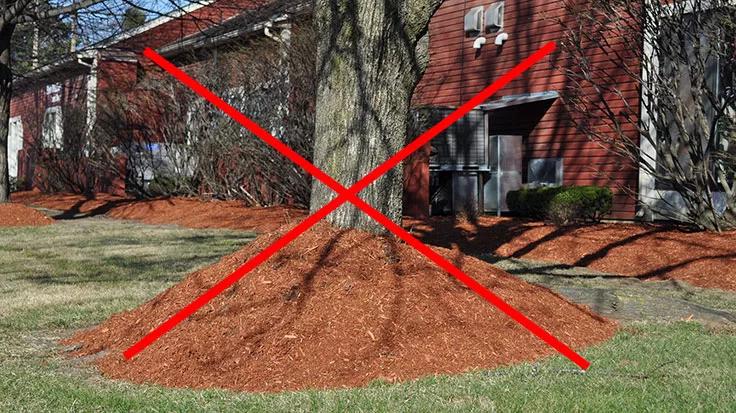
Credit: www.gardeners.com
Steps To Apply Cedar Mulch
Remove weeds and old mulch. Break up the soil with a rake. This helps air and water reach plant roots. Add compost or fertilizer if needed. Level the soil with a rake. Your soil is now ready for mulch.
Spread the mulch evenly. Aim for a 3-inch layer. Keep mulch away from plant stems. This prevents rot. Use a rake to even out the mulch. Water the mulch to help it settle. Check the mulch depth often. Add more if needed.
Maintaining Cedar Mulch
Check the mulch often. Look for thin spots. Fill these spots with fresh mulch. Make sure the mulch is even. Remove any weeds that grow. Inspect after heavy rain or wind.
Add new mulch once a year. Spring is a good time. Spread a thin layer over the old mulch. Keep the layer about 2-3 inches thick. Avoid piling mulch against tree trunks. This can hurt the trees.
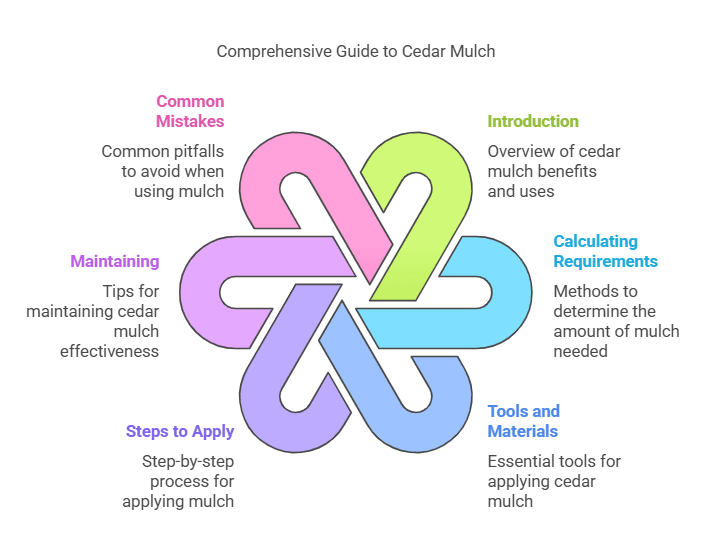
Common Mistakes To Avoid
Too much mulch can harm plants. It blocks air and water flow. Roots may suffocate. Plants may rot. A thin layer, 2-3 inches, is best. Thicker layers can lead to problems. Remove old mulch before adding new. This keeps soil healthy. It also prevents pests.
Old mulch can harbor pests. It can also contain mold. Fresh mulch is better. It keeps plants healthy. Old mulch may not decompose well. It can form a crust. This crust blocks water. Fresh mulch improves soil. It helps plants grow.
Environmental Impact
Calculate the amount of cedar mulch needed to cover your garden. Consider the size and depth you want. This helps ensure proper coverage and environmental impact.
Sustainable Practices
Cedar mulch is a natural material. It helps the soil. Using cedar mulch reduces the need for chemical fertilizers. The mulch breaks down over time. It adds nutrients to the soil. Cedar mulch also helps keep moisture in the ground. This means less watering is needed. This saves water. It also helps plants grow better. Cedar mulch is made from fallen or trimmed trees. This is better for the environment. It does not require cutting down healthy trees.
Disposal And Recycling
Disposing of cedar mulch is easy. It breaks down naturally. You can compost it. This turns it into rich soil. Cedar mulch can also be reused. Move it to a new garden bed. Spread it around new plants. This saves money. It also reduces waste. Cedar mulch is a great choice for the environment. It is both useful and eco-friendly.
Cost Considerations
Buying cedar mulch can be costly. First, check your budget. Calculate how much mulch you need. Measure your garden area. Plan for depth of mulch. Usually, 2 to 3 inches is enough. Write down your needs. Compare prices at different stores.
Consider cheaper options. Pine bark mulch costs less. Leaves and grass clippings are free. Straw or hay also works well. Use newspaper layers to save money. Recycled mulch can be a good choice. These can help cut costs. Protect your plants without spending much.
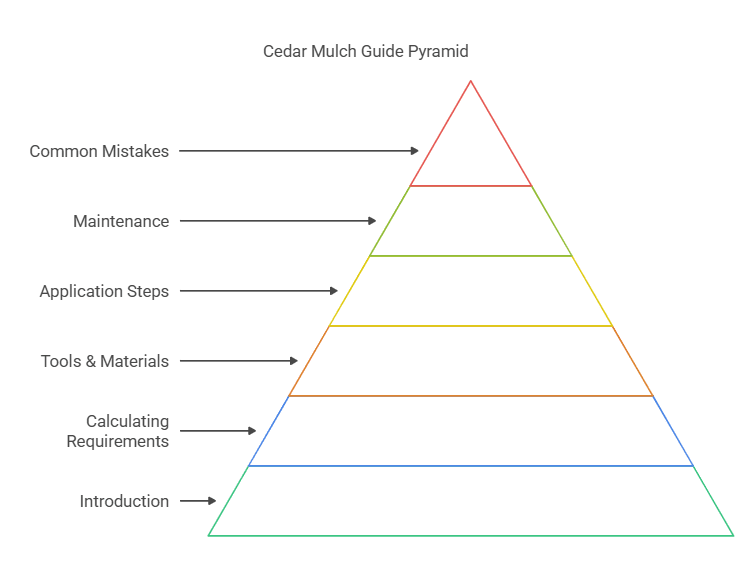
Frequently Asked Questions
How Do I Calculate Cedar Mulch Needed?
To calculate cedar mulch, measure the area in square feet. Multiply the area by the desired depth in feet. One cubic yard covers approximately 100 square feet at 3 inches deep.
How Much Area Does One Bag Of Cedar Mulch Cover?
A typical bag of cedar mulch covers about 2 cubic feet. This usually covers approximately 12 square feet at a 2-inch depth.
What Depth Should Cedar Mulch Be Applied?
Cedar mulch should be applied at a depth of 2 to 4 inches. This helps retain moisture and suppress weeds effectively.
Is Cedar Mulch Safe For All Plants?
Yes, cedar mulch is safe for most plants. It helps retain moisture, regulate soil temperature, and prevent weed growth.
Conclusion
Calculating the right amount of cedar mulch is simple. Measure your garden area. Decide on the mulch depth you need. Use an online mulch calculator for accuracy. Mulch helps your garden thrive. It retains moisture and suppresses weeds. Keep these tips in mind.
Your garden will look great and stay healthy. Happy gardening!

